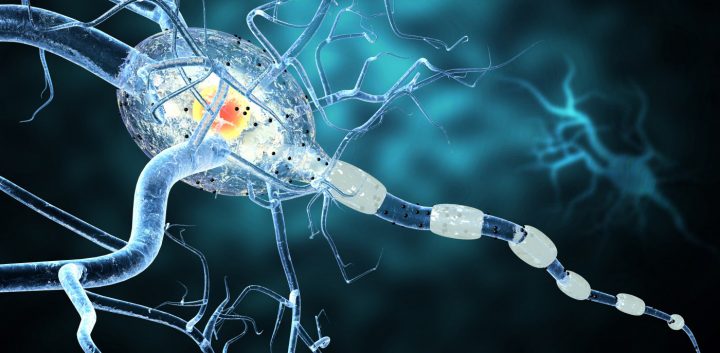Chi3l3 Protein Favors Production of Myelin Repair Cells, Mouse Study Determines
Written by |

Photo by Shutterstock
A protein marker for activated immune cells called Chi3I3 is key for the production of myelin-forming cells, and may become a target to boost myelin repair in multiple sclerosis (MS), according to a new study.
The research, “Chi3l3 induces oligodendrogenesis in an experimental model of autoimmune neuroinflammation,” was published in the journal Nature Communications.
MS is characterized by progressive loss and disrupted repair of myelin, a protective layer of nerve fibers formed by cells called oligodendrocytes. Because these cells are highly susceptible to injury, the differentiation of oligodendrocytes from neural stem cells (NSCs) — a process called oligodendrogenesis — is critical for repair and replenishment of the damaged myelin.
Immune cells called microglia and macrophages contribute to the proper environment for the initial steps of NSCs’ differentiation in a small stem-cell niche in the adult brain, known as subventricular zone (SVZ). Then, oligodendrocyte precursor cells migrate to the site of myelin damage and mature into oligodendrocytes.
Prior studies in the experimental autoimmune encephalomyelitis (EAE) mouse model of MS, showed that activated microglia support regeneration during the acute phase of the disease, but may have the opposite effect during chronic disease.
Connect with other people and share tips on how to manage MS in our forums!
Regeneration-supporting microglia produce high levels of Chi3I3, a marker for activation of microglia and macrophages. However, its function in the central nervous system (CNS) — the brain and spinal cord — remains largely unknown.
Now, a team from Charité — Universitätsmedizin Berlin, in Germany, used the EAE model to better understand the role of Chi3I3.
Results showed that expression of the mouse gene Chi3l3 increased up to 3,471-fold during peak disease, decreasing to nine-fold during chronic EAE. Chi3I3 protein was detected only during the acute phase, and was found at the same sites (co-localized) with the microglia and macrophage protein marker CD11b.
Then, genetic manipulation to lower Chi3l3 levels in microglia prior to EAE induction, accelerated disease onset and increased its severity during the chronic phase, while also reducing the generation of oligodendrocyte precursor cells. Such results are “consistent with a mechanism of Chi3l3-induced clinical recovery that involves oligodendrogenesis,” the scientists wrote.
In both mice and in human cells, the investigators observed that administration of Chi3l3 into the SVZ induced an increase in the production of oligodendrocyte precursor cells.
“We have found that the Chi3l3 protein plays a central role in the body’s capacity to produce new myelin-forming oligodendrocytes,” Sarah-Christin Starossom, the study’s first author, said in a press release.
Starossom, a researcher at the NeuroCure Cluster of Excellence and the Experimental and Clinical Research Center, added that Chi3l3 “initiates the differentiation of neural stem cells into myelin repair cells, which restore the electrical insulation around damaged nerve cells.”
The team further found that, in NSCs, Chi3l3 favored oligodendrogenesis by activating the epidermal growth factor receptor (EGFR) — previously linked with remyelination — without affecting cell proliferation, survival, or self-renewal. This was linked to altered levels of specific proteins that regulate gene expression (called transcription factors), namely increases in Olig1, Olig2 and Sox10, but decreases in Id2, Id4, and Hes5.
Subsequent experiments using pharmacological inhibition, as well as genetic manipulation, revealed that the effect of Chi3I3 in oligodendrogenesis is mediated by the MAPK cellular signaling pathway.
To assess the clinical relevance of their findings, scientists analyzed the effect of the human genes CHI3L1 and CHIT1 — these genes share significant sequence similarity with Chi3l3, and are highly abundant in the CNS in relapsing-remitting MS. The results revealed that these human genes also induce oligodendrogenesis.
“We hope to use this knowledge to develop a new generation of drugs that can be used in the treatment of multiple sclerosis,” Starossom said.
“As a next step,” she added, “we will study in greater detail whether Chi3l3 or related proteins can be used to reduce the neurological symptoms of MS.”





